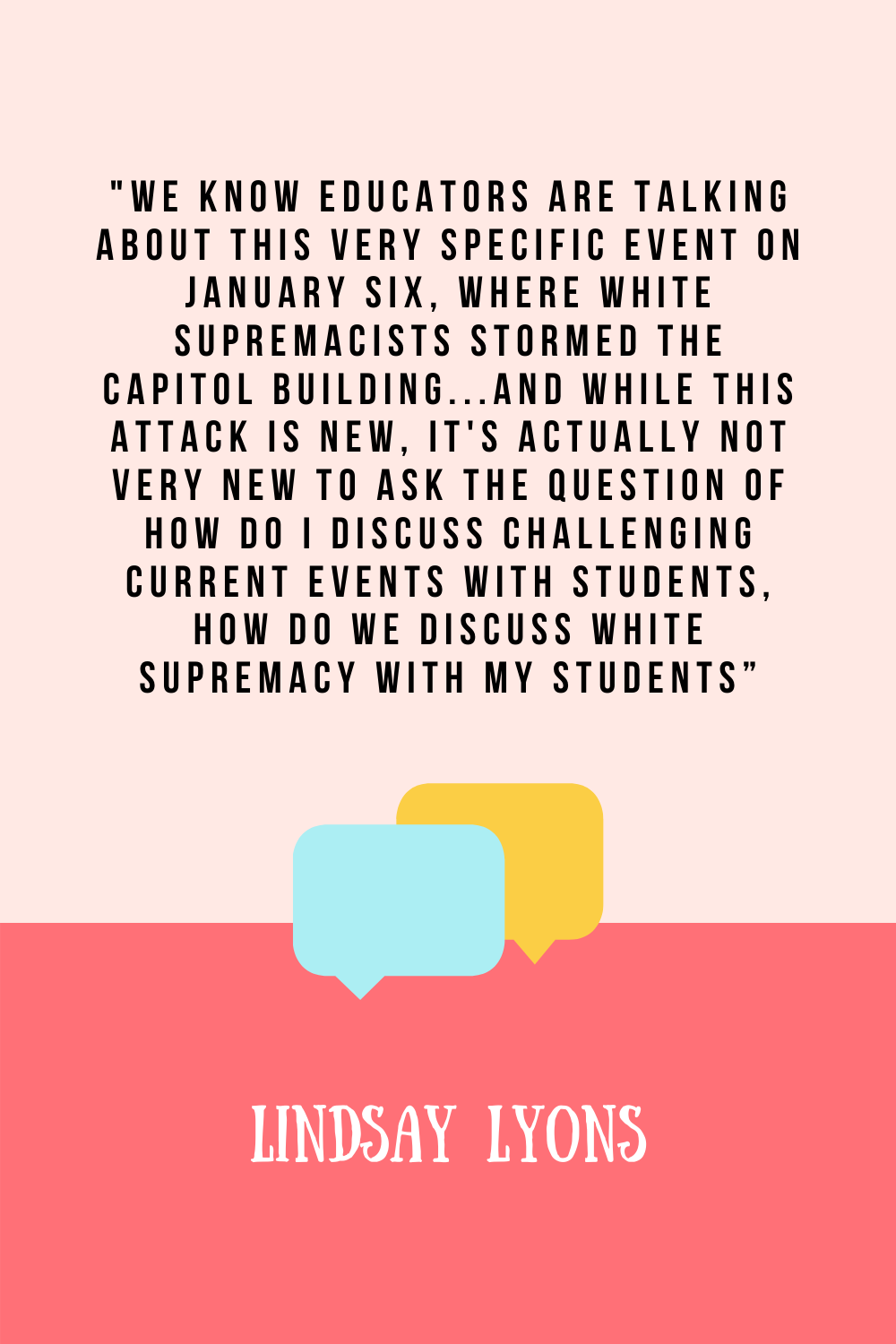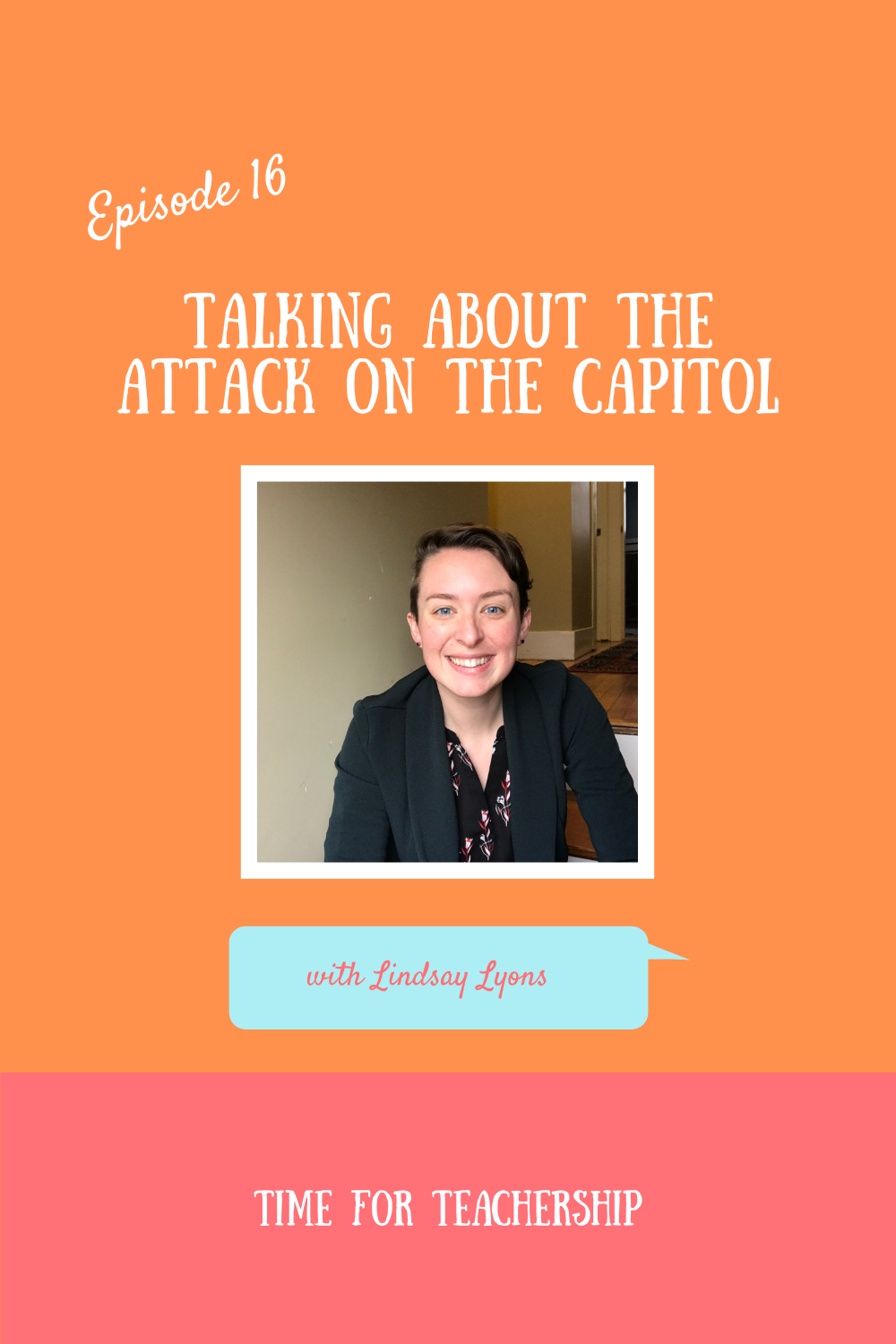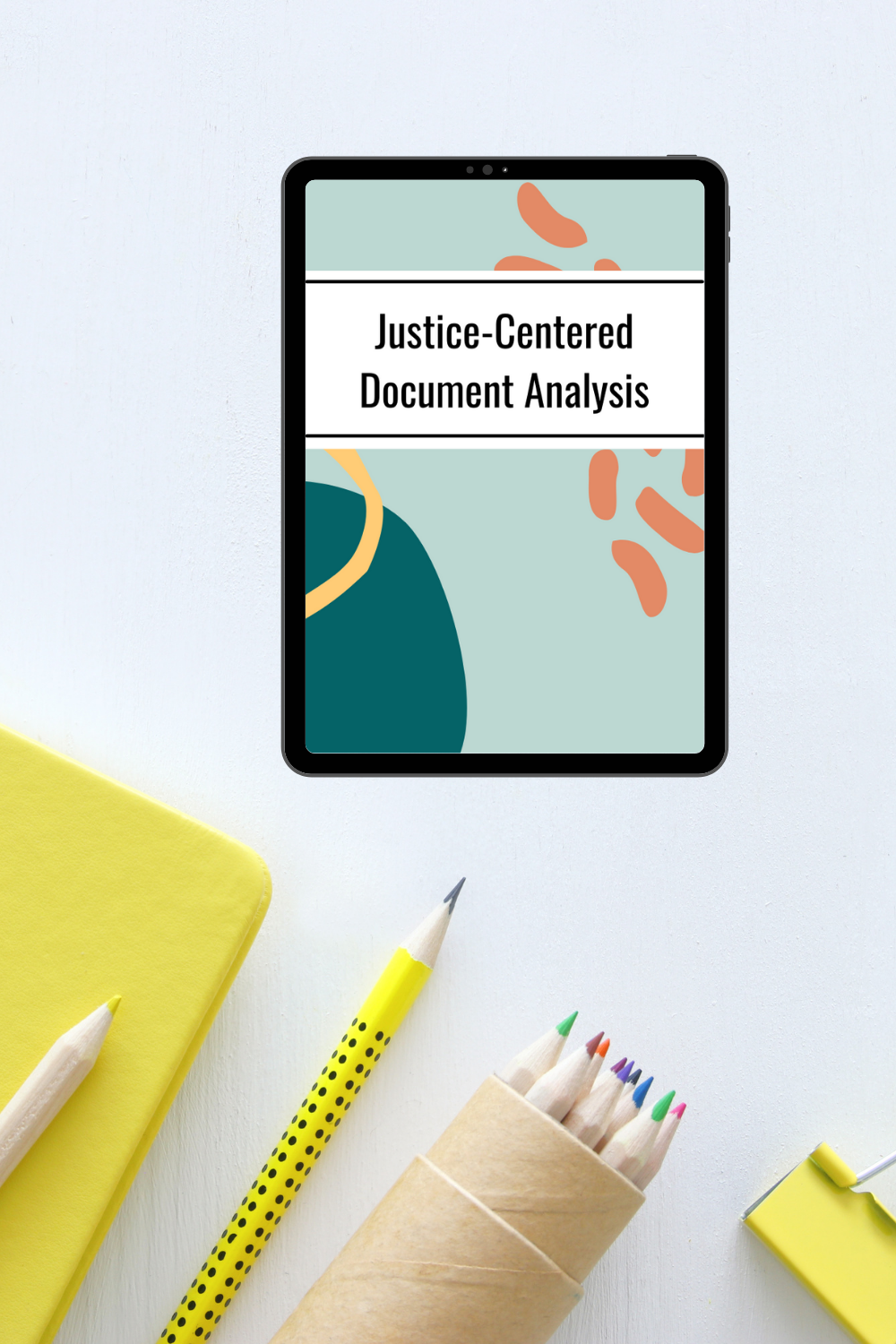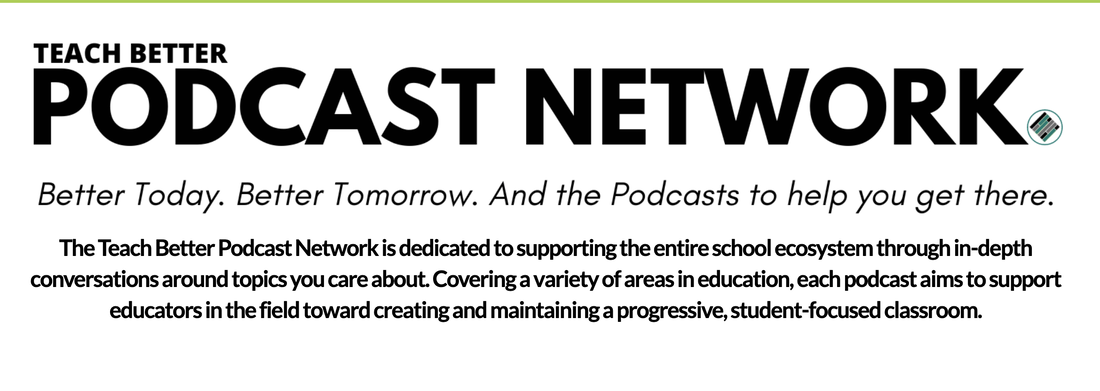|
Lindsay considers the moments leading up to the attack on the U.S. Capitol and what she decided to talk about with her white teachers teaching mostly white students after realizing it was an important learning opportunity. What happened that day On Wednesday, January 6, 2021, the United States experienced a domestic terrorist attack on its government for the first time in history. An angry mob composed of thousands of white supremacists stormed up the U.S. Capitol and passed Capitol police officers with ease. A dozen of the men from the mob made it into the building These rioters occupied, vandalized, and looted parts of the building for several hours. The events of this day led to much damage, disorder, and stress about how to handle the situation and all those responsible. In the weeks leading up to the attack, there were multiple social media groups and far right organizations that discussed plans to occupy the Capitol after a tweet by President Trump urged his supporters to gather on the 6th for a rally and protest. On the morning of January 6th, Trump provoked everyone there to march to the Capitol and fight to disrupt Congress’s certification of Joe Biden as the winner of the presidential election. It took hours for the national guard and extra officers to clear everyone out and yet all the members of Congress still came back together at the end of the night to do what they had set out to do. Creating options for our students Lindsay was in the middle of a virtual teacher training when news of the insurrection broke out. Everyone took a 10 minute pause to catch their breath and do whatever they needed for their own wellbeing before reconvening. Once they came back together, there was an unstructured talk where they could talk about what it was they were feeling. And once that had passed, they moved on towards ideas for students and their curriculum. She knew that what was happening needed to be at the front of their session, so they adjusted the workshop to incorporate a discussion about how to talk to the group's classes of mostly white students, specifically about the attack on the capitol. Bringing up heavy or difficult content is something that many teachers are used to at this point given all that has happened last year alone. Lindsay published an article for BetterLesson about talking to students about the U.S. presidential election in November. We've talked about this on a previous episode of the podcast. Many educators had some helpful advice on how to have these conversations. One educator that spoke said that students should get enough space to process their thoughts and emotions. They might talk it out with someone, journal, step outside, or just have some quiet time. Discussions are an option that many like to use because it gives students the chance to express their internal emotions and gives teachers the chance to sit in the “listening” position and consider their student’s frustrations and thoughts. Any discussions that come up should have a reminder of some agreements for engagement preceding them in order to make sure there are opportunities for everyone to be heard and validated. In these discussions, it’s also important to center dignity. “I love Donna Hicks’s book” Dignity”, [as] another great source.. to really center dignity in everything that we do and discuss in our class and name that a person's humanity, either in our class or beyond our class, it's not up for debate in our conversations or disagreements.” Sudden events like this one are important to include in your classroom because of the large effect they have on your students and their communities but some teachers don’t feel like they can just pause their curriculum with the fast pace it’s set at. Almost everything is planned out for the year way in advance. One of the ways a teacher can make it easier on themselves is to adopt a flexible curriculum already based around racial and social justice. This ensures that these important issues that come up have a place in your class and schedule. Another thing you can do is help white students develop antiracist identities within this justice-forward curriculum. It’s important for white students to see examples of white folx as co-conspirators advancing racial justice. If they don't see racism as their issue or they don't see examples of how to challenge it, white students may avoid talking about or acting against white supremacy. Curriculum can also give students space to take action within the class. Examples include:
And lastly, remember to deconstruct and analyze the event itself. As educators, we have to take what we’re seeing on screen and in the news and help students make sense of what it all means. Take all this surface level information and help them figure out how white supremacy is present. Why did it happen? What allowed for this event to happen? How would it have been different if these people did not have white-skin privilege (i.e., advantage)? To recap these points: 1. Give students enough space to process their emotions 2. Design your curriculum with foundations in social justice 3. Help white students develop antiracist white identities 4. Analyze the event itself If there’s one takeaway from this conversation it’s this: “The question that I came to ask myself every day to address this question for my own practice is this: what does it do to my humanity if I don't teach for justice, and is my humanity a price I'm willing to pay?” To continue the conversation, you can head over to our Time for Teachership Facebook group and join our community of educational visionaries. You can follow Lindsay on LinkedIn and Instagram. Until next time leaders, continue to think big, act brave, and be your best self.
0 Comments
Leave a Reply. |
Details
For transcripts of episodes (and the option to search for terms in transcripts), click here!
Time for Teachership is now a proud member of the...AuthorLindsay Lyons (she/her) is an educational justice coach who works with teachers and school leaders to inspire educational innovation for racial and gender justice, design curricula grounded in student voice, and build capacity for shared leadership. Lindsay taught in NYC public schools, holds a PhD in Leadership and Change, and is the founder of the educational blog and podcast, Time for Teachership. Archives
May 2024
Categories |




 RSS Feed
RSS Feed